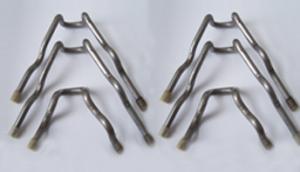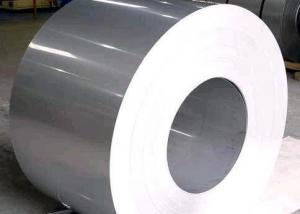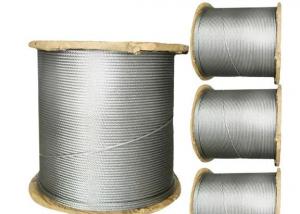Steel Grid
- Loading Port:
- China Main Port
- Payment Terms:
- TT OR LC
- Min Order Qty:
- -
- Supply Capability:
- -
OKorder Service Pledge
Quality Product, Order Online Tracking, Timely Delivery
OKorder Financial Service
Credit Rating, Credit Services, Credit Purchasing
You Might Also Like
 |
- Q:Can stainless steel wire be coated for additional protection?
- Yes, stainless steel wire can be coated for additional protection. Coatings such as PVC, nylon, or epoxy can be applied to stainless steel wire to enhance its resistance against corrosion, abrasion, or other environmental factors.
- Q:Can stainless steel wire be used for wire bending?
- Yes, stainless steel wire can be used for wire bending. Stainless steel is a strong and durable material that can be manipulated and bent into different shapes and forms. It is often used in various industries, such as jewelry making, sculpture, and electrical wiring, where wire bending is required. Stainless steel wire's resistance to corrosion and its ability to maintain its shape make it a suitable choice for wire bending projects.
- Q:What are the common uses of stainless steel wire in the oil and gas industry?
- The oil and gas industry extensively utilizes stainless steel wire because of its exceptional properties and capabilities. In this industry, stainless steel wire finds common uses in the following areas: 1. Wireline applications: Stainless steel wire is widely used for well logging, data acquisition, and intervention operations in wireline applications. It possesses high strength and corrosion resistance, enabling it to withstand harsh downhole conditions and extreme temperatures. 2. Manufacturing of downhole tools: Stainless steel wire is employed in the production of various downhole tools like fishing tools, packers, and plugs. These tools require high tensile strength and corrosion resistance, both of which stainless steel wire provides. This ensures their durability and reliability in oil and gas operations. 3. Construction of umbilical cables: Stainless steel wire plays a crucial role in the fabrication of umbilical cables used in offshore oil and gas production. These cables consist of multiple hydraulic, electrical, and fiber optic lines, and stainless steel wire provides the necessary strength and protection to these lines. This enables efficient communication and control between subsea installations and the surface. 4. Manufacturing of springs and fasteners: Springs and fasteners used in oil and gas equipment, such as valves, pumps, and wellheads, often utilize stainless steel wire. The exceptional mechanical properties of stainless steel wire assure the reliability and longevity of these components in demanding operating conditions. 5. Reinforcement in hoses and pipelines: Stainless steel wire is frequently incorporated into hoses and pipelines in the oil and gas industry to enhance their strength and resistance to high pressures. By preventing hose or pipeline failure, it ensures the safe and efficient transfer of fluids in oil and gas operations. 6. Filter screens and mesh: Stainless steel wire mesh is applied as filter screens in well completions and oil production processes. It aids in the separation of solid particles from fluids, thanks to its corrosion resistance and high filtration efficiency. This ensures fluid cleanliness and prevents damage to downstream equipment. To summarize, the outstanding strength, corrosion resistance, and versatility of stainless steel wire make it a valuable component in various applications within the oil and gas industry. Its use in wireline operations, downhole tools, umbilical cables, springs, fasteners, hoses, pipelines, and filter screens greatly enhances the efficiency, safety, and reliability of oil and gas operations.
- Q:Stainless steel wire drawing plate, matte stainless steel is the same
- Dissimilarity。Stainless steel wire drawing is a kind of metal processing technology. It is the most popular surface treatment technology in the stainless steel and aluminum products industry. It is the drawing effect of the stainless steel and aluminum products.
- Q:Stainless steel 304 work teeth, easy to break the silk work?
- 304 stainless steel is a common stainless steel material, the density of 7.93 g/cm3, the industry is also called 18/8 stainless steel. High temperature resistance of 800 degrees, with good processability, high toughness characteristics, widely used in industry and furniture decoration industry and food and medical industry.
- Q:Can stainless steel wire be used in medical applications?
- Yes, stainless steel wire can be used in medical applications. Stainless steel is a popular material choice in the medical field due to its unique properties. It is corrosion-resistant, which is crucial for maintaining hygiene and preventing contamination. Stainless steel wire is also known for its excellent strength and durability, making it suitable for various medical applications. It is commonly used in medical instruments, such as surgical tools, orthopedic implants, and dental devices. Additionally, stainless steel wire is biocompatible, meaning it does not elicit adverse reactions when in contact with bodily tissues. This makes it a safe and reliable choice for medical professionals and patients alike.
- Q:What is the corrosion resistance of stainless steel wire?
- Due to its composition and unique properties, stainless steel wire demonstrates exceptional resistance to corrosion. Its ability to resist rusting or tarnishing is attributed to the presence of chromium, which forms a protective layer known as the passive layer on the wire's surface. The corrosion resistance of stainless steel varies depending on the amount of chromium present. Higher chromium content results in stronger resistance to corrosion. Additionally, stainless steel wire may also contain other alloying elements like nickel, molybdenum, or titanium, further enhancing its corrosion resistance. Stainless steel wire is highly resistant to various corrosive environments, including moisture, chemicals, and saltwater. This makes it suitable for critical applications in marine environments, chemical processing plants, and food processing facilities, where corrosion resistance is crucial. Moreover, stainless steel wire can endure extreme temperatures, both high and low, without compromising its corrosion resistance. This versatility allows it to be utilized across a wide range of industries and applications. It is important to note that although stainless steel wire is highly resistant to corrosion, it is not entirely immune. Factors such as the environment, exposure time, and the presence of corrosive substances can still impact its performance. Regular maintenance and proper handling are necessary to ensure the longevity and sustained corrosion resistance of stainless steel wire.
- Q:Can stainless steel wire be used for wire brushes?
- Yes, stainless steel wire can be used for wire brushes. Stainless steel wire is known for its strength, durability, and corrosion resistance, making it a popular choice for various applications, including wire brushes. The stainless steel wire bristles are able to effectively remove dirt, rust, and other debris from surfaces without scratching or damaging them. Additionally, stainless steel wire brushes are suitable for use in both wet and dry conditions, making them versatile for various cleaning and polishing tasks.
- Q:What are the different types of stainless steel wire ropes used in oil and gas exploration?
- Oil and gas exploration commonly employs various types of stainless steel wire ropes, specifically designed to withstand the harsh conditions and environments encountered in the industry. One such type is the 6x19 construction, consisting of six strands, each containing 19 individual wires. This construction strikes a balance between strength and flexibility, making it suitable for a range of applications in the industry. Another frequently used type is the 7x19 construction, featuring seven strands, each comprising 19 wires. This construction offers even greater flexibility than the 6x19, making it ideal for applications requiring maneuverability. Moreover, the industry utilizes the 8x19 construction, which consists of eight strands, each containing 19 wires. This construction excels in resistance to abrasion and fatigue, making it well-suited for demanding applications. Additionally, the 6x36 construction is employed in oil and gas exploration, with its six strands, each containing 36 wires. This construction boasts superior breaking strength and resistance to bending fatigue, making it suitable for heavy-duty applications. Lastly, the 8x36 construction is utilized, composed of eight strands, each containing 36 wires. This construction provides excellent resistance to crushing and bending fatigue, making it ideal for applications requiring high strength and durability. In conclusion, the selection of stainless steel wire ropes for oil and gas exploration is based on specific application requirements, taking into account factors such as strength, flexibility, resistance to fatigue and abrasion, and the ability to withstand harsh environmental conditions.
- Q:Can stainless steel wire be used for jewelry-making?
- Indeed, jewelry-making can utilize stainless steel wire. The reason behind its popularity in this field lies in its enduring nature, robustness, and ability to resist tarnishing and corrosion. This adaptable material allows for the creation of diverse jewelry designs through shaping, twisting, and manipulation. Bracelets, necklaces, earrings, and even wire-wrapped gemstone pendants commonly employ stainless steel wire. Furthermore, individuals with sensitive skin or metal allergies can opt for this hypoallergenic option. In summary, stainless steel wire provides a dependable and cost-effective alternative to conventional jewelry-making materials such as gold or silver.
1. Manufacturer Overview |
|
|---|---|
| Location | |
| Year Established | |
| Annual Output Value | |
| Main Markets | |
| Company Certifications | |
2. Manufacturer Certificates |
|
|---|---|
| a) Certification Name | |
| Range | |
| Reference | |
| Validity Period | |
3. Manufacturer Capability |
|
|---|---|
| a)Trade Capacity | |
| Nearest Port | |
| Export Percentage | |
| No.of Employees in Trade Department | |
| Language Spoken: | |
| b)Factory Information | |
| Factory Size: | |
| No. of Production Lines | |
| Contract Manufacturing | |
| Product Price Range | |
Send your message to us
Steel Grid
- Loading Port:
- China Main Port
- Payment Terms:
- TT OR LC
- Min Order Qty:
- -
- Supply Capability:
- -
OKorder Service Pledge
Quality Product, Order Online Tracking, Timely Delivery
OKorder Financial Service
Credit Rating, Credit Services, Credit Purchasing
Similar products
New products
Hot products
Related keywords

























